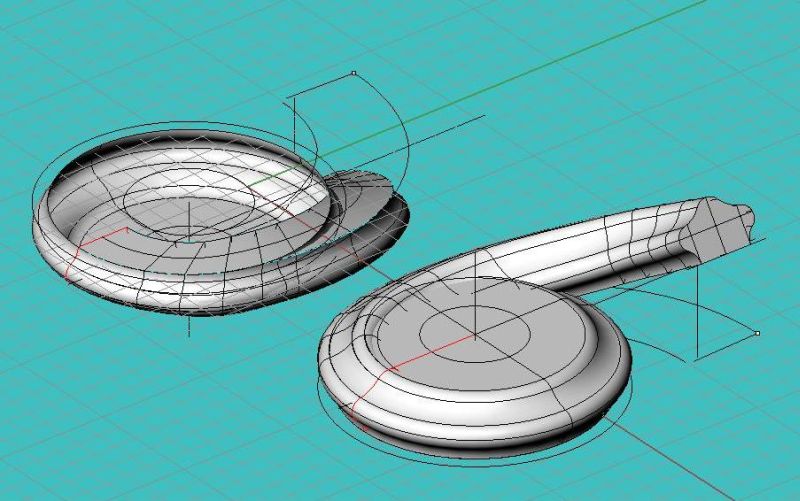Hinge holes on a CNC
Boring 35mm hinge holes on a CNC machine. March 20, 2001
Question
Is anyone using a 35mm bit or other technique on their CNC to bore 35mm hinge cup holes? My machine guy says we are unable to do it. We have a Biesse Rover 336 and a new Rover 20.
Forum Responses
Not really knowing your machine, you may have some clearance problems fitting that large of diameter bit in the boring head. However, the main problem I see with it is edgebanding. There's a good chance of your copy wheels hitting the hole when you band. If you insist on putting the holes in there, and the manufacturer tells you not to bore, just route them, using a down shear bit.
Brian Personett, forum technical advisor
We do it with no problems on our Morbidelli. Most machines have 32mm center clearance on the bits. We edgeband before we drill.
A few machines have a separate spindle, usually near two other spindles, just for this. Why do you machine the edge?
The copy wheel on our edgebander dips a bit into the cup hole, so we band first to avoid this problem.
I just setup my Biesse Rover 13S with a 35mm bit for hinge boring to retire my hinge machine. Works very well. We also edgeband before we drill.
From the original questioner:
We edgeband first as well. I am being told that we can not achieve a consistent depth because the cutting force required causes the boring head to move up during the feed down. We can do it if we make multiple plunges into the material.
Could you create a subprogram that has a hole for the cup pocketed out (make the center of the pocket the 0,0 point), add in the drilling for the bushings, and insert this at the hinge location in your programs? Pocketing it out won't take much longer than drilling and the depth would be correct.
Three things you should be able to do:
1) Slow the plunge speed down
2) Slow the RPM's down, and
3) Force the bit to sit at the bottom of the hole for x number of seconds so it has a chance to reach dead bottom before the head retracts. All this should/can be done in your tool parameters.
The comments below were added after this Forum discussion was archived as a Knowledge Base article (add your comment).
Comment from contributor A:
We are routing our hinge cup holes with a downshear bit, and banding after by inserting a 35mm plug in the cup hole so the copy wheel doesn't drop. It is very little extra effort and that way we can do the hinge holes on the same nest we cut the doors.
Comment from contributor B:
I have no problem using a 35mm hinge bit on my Morbidelli. We also have a Routech with the 35mm loaded in the tool changer for router spindle usage, which I guess is the only way we can use it there.
Comment from contributor C:
Ever thought of using the router to drill your 35mm holes? It is what I use because I do not want to take up the space with a 35mm bit.
Comment from contributor D:
I have used 13mm to 42mm bits for hinges. We did them with and without banding fist and compensated. The main problem that we ran into was over/under drilling.
To compensate for underdrilling, I slowed the feed rate. I have double drilled, too. This is because many PTP machines use air pressure to hold down the bits, which is compressible so it allows the bit to push the holder up into the head, thus not drilling deep enough into the material.
To compensate for overdrilling, I got my hand on one of the hinges and checked the "actual" deeps needed to seat it in the hole and found that the drafter had overshot the depth for his own reasons. So I got permision to drill my depth through proper channels.
We also had The Tool Department machine off the tips of the bits so that the hole was flat on the bottom and the tips didn't poke through.
Comment from contributor E:
I use this type of method for all my slab doors. I bore all my holes, then edgeband. I had to modify my edgebander to accomplish this. I replaced the copy wheel with a copy shoe using a piece of HDPE. It is not quite as accurate as a wheel, but with properly adjusted scapers it works just fine. As a result, when the door comes off the bander, it is completed.
Comment from contributor F:
We do edgeband before drilling. We use the Rover to drill big holes for more control on the drilling rate. The bigger the hole diameter, the slower you need to go, even if you're using graphite bits.
Comment from contributor G:
We now do hinge cup holes before banding. We have an Olimpic bander and I had to make adapters to move the copy wheels back to where they don't dip. Works just fine.
